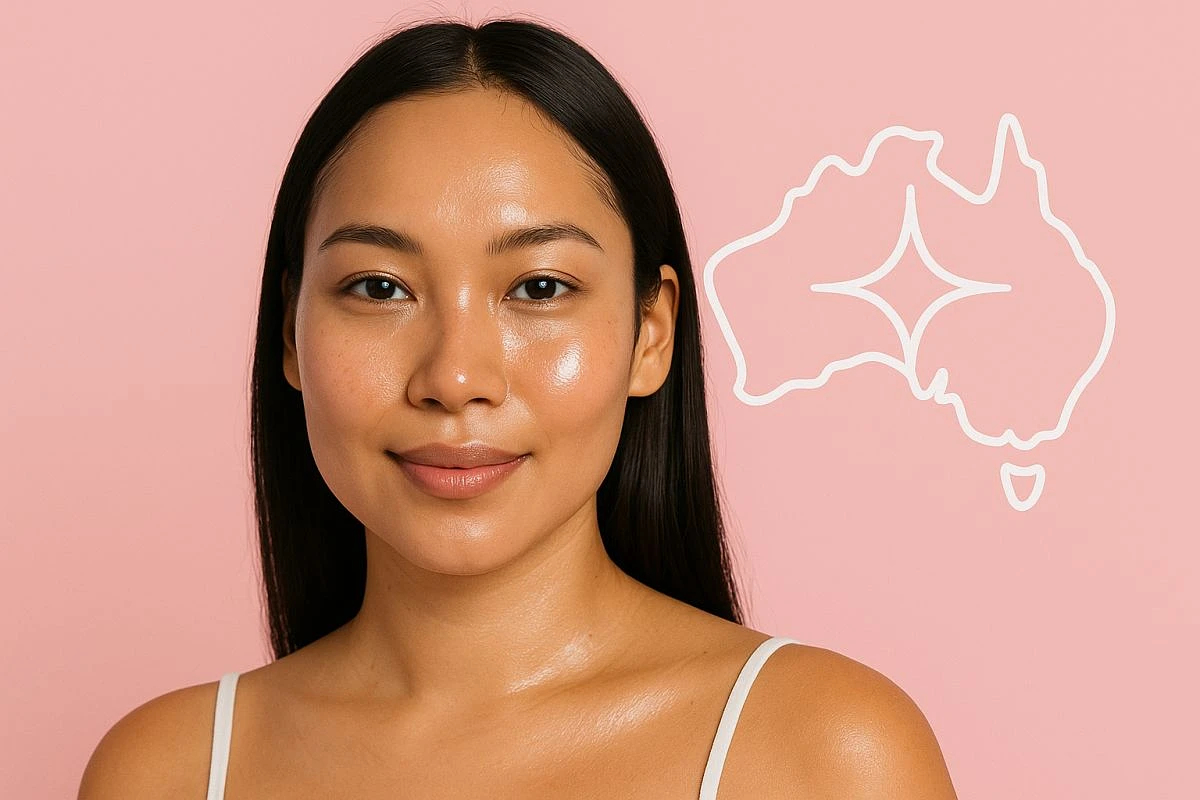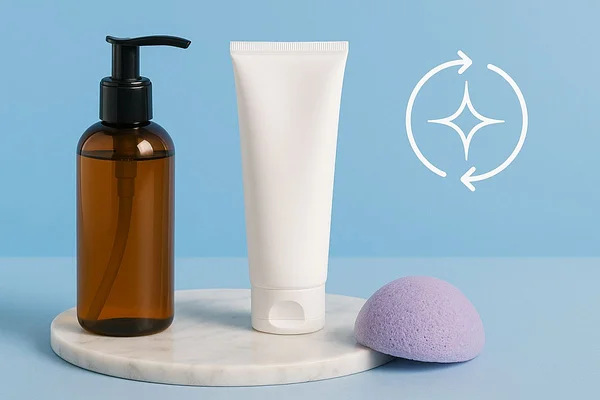Achieving Glass Skin in Australia: The Complete Scientific Approach to K-Beauty's Most Coveted Look


Glass skin – or 'yu-ri pi-bu' in Korean – represents the pinnacle of skin health: a complexion so refined, hydrated, and clear that it appears translucent and reflective like glass. This isn't about filters or makeup; it's about achieving optimal skin health through scientific understanding and meticulous care.
At the cellular level, glass skin results from:
Australia's diverse climate zones present unique challenges for achieving glass skin:
Tropical North (Cairns, Darwin): High humidity combined with intense heat can trigger excess sebum production, disrupting the delicate balance needed for glass skin. The solution lies in lightweight, water-based hydration layers that won't overwhelm skin.
Temperate Coastal (Sydney, Perth): Salt air and variable humidity require adaptive routines that can shift between hydrating and oil-controlling products based on daily conditions.
Dry Interior (Alice Springs, Broken Hill): Extreme low humidity demands intensive barrier repair and multiple hydration layers to combat severe moisture loss.
Cool Climate (Melbourne, Hobart): Cold winds and indoor heating create a dehydration cycle requiring rich, occlusive products to seal in moisture.
Morning Cleanse:
Skip harsh foaming cleansers. Instead, use a gentle milk cleanser or simply rinse with lukewarm water if your skin isn't oily. This preserves the acid mantle crucial for glass skin's characteristic glow.
Evening Double Cleanse:
Professional tip: Use separate cleansing oils for eye and face. The orbital area requires gentler formulations to prevent irritation that disrupts the glass skin effect.
Chemical Exfoliation Schedule:
Critical consideration for Australian sun exposure: Always use chemical exfoliants in evening routines and increase SPF vigilance, as these ingredients increase photosensitivity.
This Korean technique involves applying toner in multiple thin layers rather than one thick application. Here's the climate-adapted approach:
Humid Climate Method (Brisbane, Darwin):
Dry Climate Method (Perth, Adelaide):
Application technique: Press each layer gently into skin using palms, waiting 30 seconds between applications. This ensures proper absorption and prevents product pilling.
Essential Actives for Glass Skin:
Niacinamide (Vitamin B3): 5-10% concentration
Snail Mucin: 60-90% concentration
Centella Asiatica Complex:
Propolis: 10-20% concentration
The final steps create the smooth, reflective surface characteristic of glass skin:
Emulsion Application:
Use a lightweight emulsion before heavier creams. This creates multiple moisture barriers without congestion. Apply using upward strokes, finishing with gentle tapping to enhance absorption and stimulate circulation.
Face Oil Integration:
Mix 2-3 drops of facial oil with your moisturizer rather than applying separately. This creates a more natural finish while preventing the excessive shine that can occur with layered oils in humid climates.
Sleeping Mask Strategy:
Apply sleeping masks only to dry areas, not the entire face. This prevents over-hydration of oily zones while intensively treating areas needing extra care.
Store facial globes or jade rollers in the refrigerator. After completing your skincare routine, roll over face for 5 minutes. This:
Perform this 3-minute massage during oil cleansing:
Professional-level treatment you can perform at home:
Problem: Excessive shine rather than glow
Solution: Reduce heavy products and increase niacinamide concentration. Use mattifying primer on T-zone only, maintaining glow on cheeks.
Problem: Dehydration despite multiple hydration layers
Solution: Check water quality – hard water can disrupt skin barrier. Consider a shower filter and use thermal water spray between skincare steps.
Problem: Texture irregularities persisting
Solution: Increase exfoliation frequency gradually and add retinol alternative (bakuchiol) 2-3 times weekly for cellular turnover.
Problem: Glass skin effect disappears by midday
Solution: Use setting spray with hyaluronic acid and carry facial mist for refreshing. Blot excess oil with rice paper, not regular tissue.
Summer Protocol:
Winter Protocol:
Week 1-2: Improved hydration, slight increase in luminosity
Week 3-4: Noticeable pore refinement, enhanced smoothness
Week 5-8: Significant texture improvement, developing glow
Week 9-12: Achievement of glass skin effect with consistent routine
Remember: Glass skin is a journey, not a destination. Skin conditions fluctuate with hormones, stress, and environment. The goal is optimal skin health that naturally produces the glass skin effect, not perfection every single day.
Achieving glass skin in Australia requires understanding both K-Beauty principles and our unique environmental challenges. By adapting Korean techniques to local conditions and maintaining consistency, the coveted glass skin effect is absolutely attainable.
The key is patience, consistency, and listening to your skin's changing needs. Start with the basics, gradually incorporate advanced techniques, and remember that healthy skin is always more beautiful than perfect skin. Your glass skin journey is uniquely yours – embrace it with the dedication and self-care philosophy that makes K-Beauty so transformative.
K-Beauty Expert at KA Shop

Chemical exfoliation can transform your skin — but with so many acids to choose from, how do you ...

Uncover the transformative power of K-Beauty's double cleansing method adapted for Australian lif...
Loading...